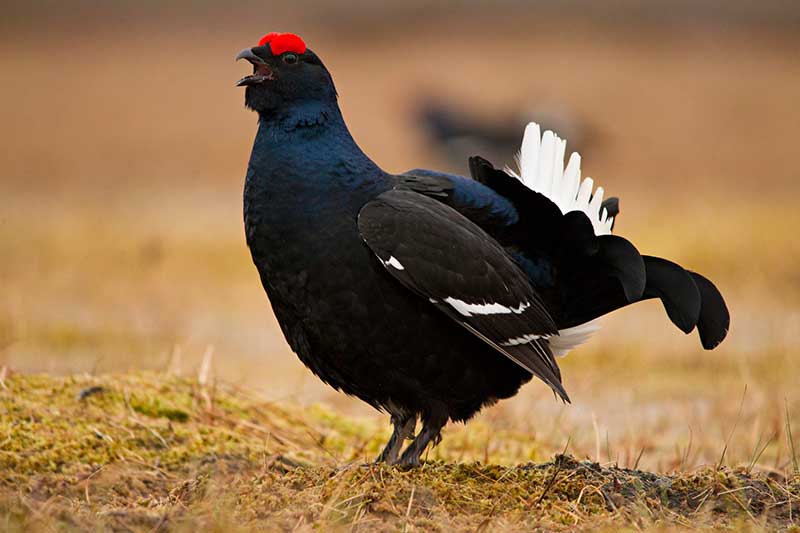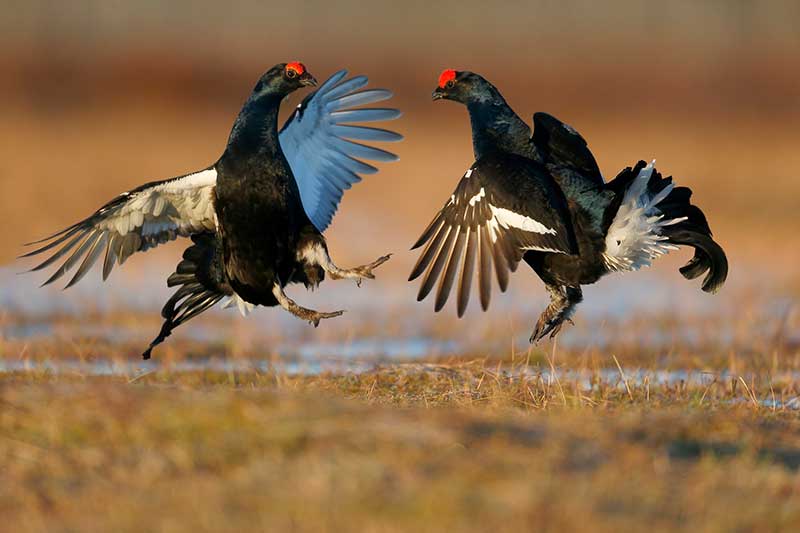Main Menu

Breeding birds: 5,100 males
Family: Pheasants, Grouse, And Allies
Adult male black grouse have a glossy black plumage with blue or green reflections. The wings have a white carpal patch and a white wing bar and the undertails used in displays are white. They have a distinctive red wattle above each eye and the legs and feet are dark brown.
The female is smaller than the male and has brown plumage which is heavily barred with black. Females have a narrow white wing bar and a short tail.
Juvenile black grouse look similar to adults except the males are browner and duller in their first year.
Try our interactive bird identifier
During breeding season male black grouse perform courtship displays at leks where up to 40 birds will gather at dawn.
Breeding season begins in spring and eggs are laid in May or June. Black grouse build their nests on the ground hidden among scrub or tall vegetation. They scrape a small hole which they line with plants and feathers.
Black grouse lay 6-11 creamy white eggs with brown speckles which are incubated for about 25 days. Females leave the nest three times a day to feed. Chicks leave the nest a few days after hatching and are able to fly by the time they are a month old.
Black grouse eat many plants including buds, pine needles and cones, dwarf shrubs such as heather, grasses and berries such as bilberries. For their first few days chicks will also eat insects and spiders as well as moth caterpillars. As they get older the proportion of plants in their diet increases and by the time they are independent they will be living almost exclusively on plant matter.

Black grouse can be seen all year round in the upland areas of Wales, the Pennines and most of Scotland. They can be spotted on farmland and moors where there are nearby trees.
Habitat loss and overgrazing have resulted in a severe decline in the population of black grouse, although conservation efforts are seeing numbers increase in some areas.
The size of the black grouse’s wattle is linked to testosterone levels, and may be a visual signal by which females can assess a mate’s potential.